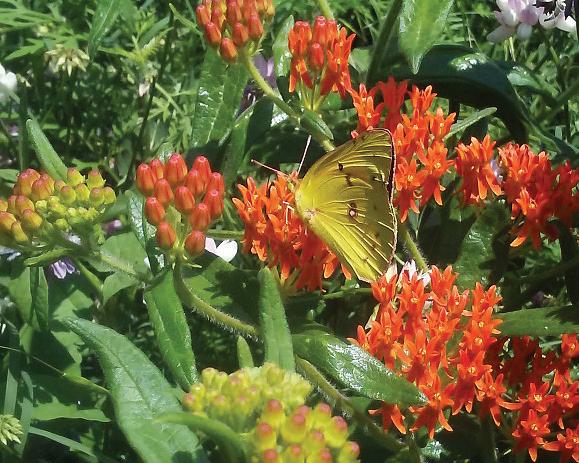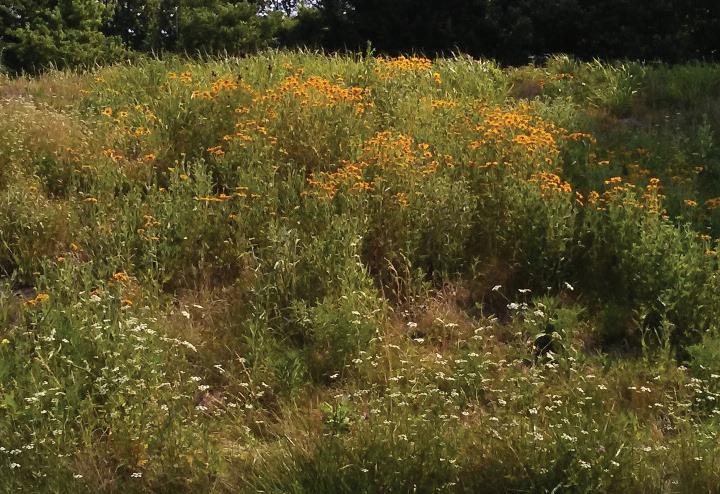
2 minute read
the environment
The Environmental Practices Used in LSPR
By
Advertisement
Ever go to a different part of the country or even a different part of the world and marvel at the different types of plants? Exotic plants or trees such as palm trees or even a simple type of flower may not grow in our area due to the extra attention it may require. Anything from water to pollination to different seasons can impact a plant’s life. In Lee’s Summit parks, the utilization of native plants reduces maintenance and the amount of water used and is environmentally responsible.
Speaking of water, have you ever heard of a bioswale? LSPR currently maintains seven. Bioswales are channels with very slightly sloped sides made for stormwater runoff that aid in pollution removal through the vegetation and the soil. Sloping helps keep contaminants from the sewers and streams and even reduces flooding. They are generally mulched or vegetated, normally around streets or parking lots. Bioswales are currently utilized at Lea McKeighan North, Lea McKeighan South, Williams Grant Park, Summit Park, Legacy Park, Harris Park, Legacy Park Amphitheater, and Wadsworth Park.
LSPR provides beneficial pol-
#DidYouKnow?
LSPR uses innovative techniques for park and open space development. For example, in the development of Arborwalk Park, park improvements were integrated into a stormwater management area that includes over 30 species of aquatic, semi-aquatic, and upland native plant species.
linator habitats. As you may know, pollination is a very important part of producing plants, and a plant’s flowers are the key to producing seeds. Transferring pollen grains from one flower to another flower isn’t as complex as it may seem, but it does rely solely on wind, birds, butterflies, or bees to visit the flower. The pollen attaches itself to one of the creatures while eating or collecting pollen. When they visit another flower, the pollen is dropped on the flower’s stigma, which may result in a successful reproduction of the flower. To keep the plants growing each season, LSPR has six butterfly pollinator gardens located in the roundabout at the Gamber Center, the back patio at Longview, the front landscape beds at Lovell Community Center, the front beds of Park Construction and Operations Center, around the main parks sign at South Lea Park and Children’s Memorial Butterfly Garden at Lowenstein Park.
The Children’s Memorial Butterfly Garden is also a recognized waystation for Monarch butterflies and was planted in partnership with Bridging the Gap. These waystations are put in place to conserve monarch butterflies by planting nectar plants, milkweed plants, shelter (plants close together) and sun exposure.
You may have noticed un-mowed acres of our parks. These are known as “no mow” areas. They have been planted at Legacy Park, Hartman Park, Velie Park, and the medians on Blackwell Parkway. These areas have been planted with a mix of native flowering plants and native grasses. They are brush-hogged twice a year which saves on mowing. Additionally, these areas are monitored for invasive weeds, which, when found, are eradicated. No mow areas encourage native plant growth, provide environments for native birds, support ecosystems by increasing wildlife habitats, promote sustainable landscapes, and reduce erosion.
What’s a picnic in a park without a nice shade tree? How do we know which trees would be best for our parks? LSPR utilizes a list of approved varieties recommended by the Missouri Department of Conservation to ensure we make environmentally beneficial choices. This is probably why you won’t see a palm tree in one of our parks! Oaks, Black Walnut, Cottonwoods, and the flowering Dogwood (state tree), are examples of trees you will find in our parks.
Establishing native plants can be finicky, and it definitely takes time and effort on the front end, but the benefits are many. LSPR will continue to make efforts and investments to better our parks and the environment with native plants and best practices.







